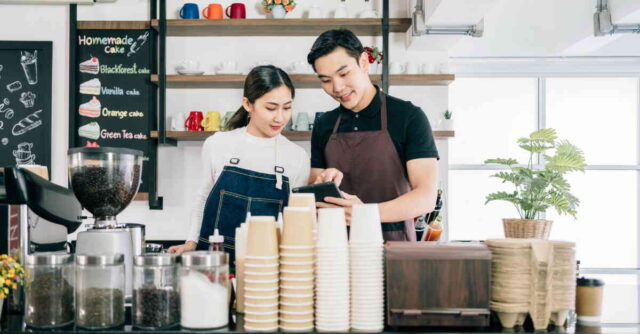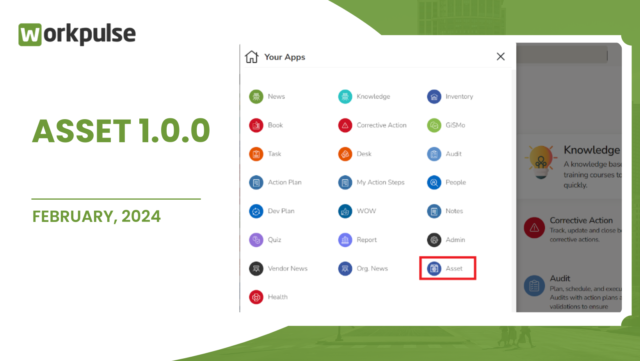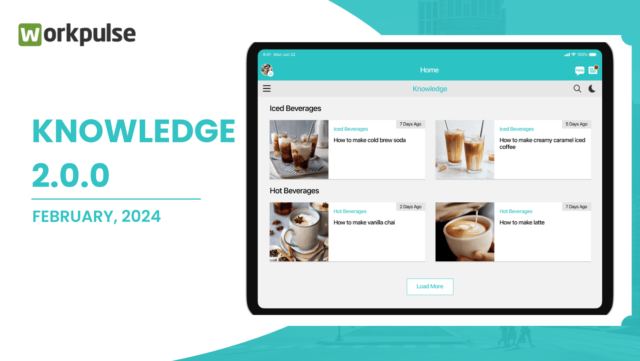For restaurant operators, it is important to keep an eye out for QSR trends in order to prepare themselves the challenges as well as opportunities. While 2020 was a year marked by unforeseen situations, global pandemic, disruptions in technology, rapidly changing consumer behavior, and strategic management of distribution, 2021 witnessed the recovery of a sector which managed to not only survive the Covid-19 repercussions, but also pave the way for faster adaption to changing marketing dynamics.
The QSRs were amongst the thriving segments in the restaurant industry. The sector weathered the trials of COVID-19 smoother than full-service thanks, to the drive-thru, delivery infrastructure, and, more generally, a customer comfortable with dining off-premises. All of these factors accelerated innovation and disruption in the restaurant industry beyond expectations. The interesting thing is, that was not a forced change where operators had to become something they weren’t; rather it was a much-needed transformation supported by digitization and technology.
In terms of performance, the top 10 brands for 2020 include:
- McDonalds
- Starbucks
- Chick-fil-A
- Taco Bell
- Wendy’s
- Burger King
- Dunkin
- Subway
- Domino’s
- Chipotle
One of the biggest reasons behind their growth and performance during the toughest phases in the last decade is digital transformation. Yes, there are factors like consumer behavior, market dynamics, regulations, and logistics which have played an important role in the innovations done in the restaurant industry in the past year. However, without digital transformation, none of the contributing factors would have been aligned in a manner where they worked cohesively to help meet business objectives, cater to consumer demand, and keep up with market dynamics.
Key QSR trends to watch in 2022
Based on our analysis of the QSR trends for 2021 and the insights shared by our subscribers, we have compiled a list of the top 9 QSR trends to watch in 2022.
Contactless ordering
While the lockdown saw a decline in the number of guests visiting physical locations to dine, there was been a significant recovery in 2021. However, guests are cautious about coming in contact with things. The solution to this issue is contactless ordering where guests can order from their own phones, computers, or kiosks at the locations.
This also means that a location can be operated with fewer staff as compared to a regular restaurant. It also enables a consistent approach to upselling, meaning that online orders are typically larger, on average, than orders placed with staff. Most importantly, it helps to make the guests feel safer about visiting a restaurant in person.
Integration of search, maps, and payment with online ordering
Online ordering is not a new phenomenon. It was prevalent even before the pandemic hit the world. However, the growth trajectory of online ordering was very steep during this critical phase. As more guests resorted to popular search engines like Google to provide recommendations for places to order from, the potential opportunities from the integration of search, maps, and payment with the online ordering process is massive.
Just imagine seeing restaurant suggestions being shown based on your current location or the ability to find the most relevant locations as per your food preferences. Add to that the convenience of paying online. While it is not possible for all restaurants to invest in an online ordering app of their own, they can definitely make better utilization of search engines like Google to gain visibility and attract more guests. Moreover, the personalized experience is always an advantage for meeting the expectations of guests.
Growth of dark kitchens
Dark kitchens and virtual brands – that is, brands and restaurants that have no public shop-front presence, just a kitchen and delivery operation – rapidly accelerated in 2020/2021. This is a rapidly growing concept as it helps to avoid investments in physical locations while focusing completely on an online ordering model. Dark kitchens are able to cater to multiple brands and menus from a single commercial kitchen.
Restaurants have used dark kitchens not only to become cost effective, but also to test new menus, enter new markets with low price of entry, and ensure compliance. As the entire operation is run from a single facility, it is easier to implement a robust food safety system and meet brand compliance effectively.
Healthier menus
The times have changed. Fast food is no longer unhealthy. At least, it doesn’t have to be. There are several brands that have introduced healthier menus in keeping with the rising demand from consumers. According to an article on QSR Magazine (dated March 2021), the pandemic saw an increase in the existing shift towards healthy eating and local produce.
The menus have been revamped to include more salad and fruit options. The increased awareness about sugar and salt consumption in our regular diet has also driven changes in the menu wherein lesser quantity of salt and sugar are being used. Healthy eating is now a growing trend which will continue to grow in 2022. Restaurants need to be prepared to meet the changing consumer demands while holding on to their existing menu. Innovation is the only way to bridge this gap effectively.
Business decisions driven by digital insights
Ever since the integration of digital systems in business processes, it has become possible to get access to a wealth of information and metric that have allowed better decisions to be made. The insights give real world data for the business and show the opportunities as well as weaknesses clearly. Moreover, these insights have been really useful in understanding customer interaction with the business, daily operations, compliance, and other key factors.
By leveraging digital insights, businesses will be able to make informed decisions, implement changes exactly where they are required, and ensure growth by focusing on areas that are delivering results. If your restaurant hasn’t invested in a digital system, you should consider making the change right now and equip yourself with insights to help you increase your organization’s performance.
Increased focus on food safety & brand compliance
Food safety has always been the priority for restaurants as one cannot afford to compromise the health and safety of guests. However, the pandemic has made people cautious with respect to the safety of their food and restaurants are responding to the concern by implementing strict inspections to ensure the highest levels of food quality.
Even today, a considerable number of restaurants still use the physical log book for daily inspections. This is tedious, lacks real time data monitoring, and identifying issues can take days (if not weeks) due to the manual consolidation of data. This is where digital food safety systems help restaurants to implement a highly accurate and efficient food safety regime that can reduce the time it takes to complete the tasks and also provide real time compliance levels for each location.
With integrations like sensors for recording temperature automatically, you can now be informed exactly when the issue occurs so that it can be resolved before it becomes a critical and expensive problem.
Implementation of employee engagement and training programs
Employee turnover has always been high in the restaurant industry with QSRs recently experiencing turnover of more than 200%. The pandemic made the situation even worse where brands like McDonalds literally had to offer $50 for people to just attend an interview. Finding resources has been the number one challenge for QSRs and retaining the existing staff added a whole new obstacle to fulfilling daily operations requirements.
Based on our discussion with Workpulse subscribers, we concluded that the implementation of employee engagement programs (tied with rewards and recognition) had a major impact on employee retention. Additionally, it was found that by providing regular training and growth opportunities, employees were less likely to leave the organization as they felt empowered to perform better and be incentivized for exceeding expectations.
Implementing an efficient employee engagement program doesn’t have to be another task added to the existing workload. You can use an employee engagement and people development platform to manage this digitally. Get real time metrics for engagement and find out the current competency levels in your organization to provide the correct training plan to you employees. This is not an expense; it is an investment in people that will help your organization perform better.
Introduction of customer loyalty programs
Customer loyalty programs have been one of the key trends in the pandemic with brands such as McDonalds launching their own loyalty program not only to reach new customers but also to retain their existing guests. These programs are specifically designed to engage with the guests, reward them for their continued association with a business or brand, and deliver a personalized experience to them.
Not every restaurant will prefer investing in a dedicated custom loyalty program offered through an app or website. In such cases, you should check existing platforms and guest retention solutions that offer the capability of implementing a robust loyalty program without burning a hole in the pocket. With increased online ordering, contactless payment, and search engine driven personalized suggestions, a good customer loyalty program might just be the leverage you need to connect with your guests and build a lasting relation with them.
Employee health monitoring
The effects of Covid-19 are still prevalent with news of a new variant (Omicron) causing concerns of the next steps. Even though there has been mass vaccination drives around the world, one cannot be too cautious of preventive measures to protect oneself against the virus. Several mandates have been issued for ensuring the health and safety of employees as well as guests at restaurants.
However, using physical forms and tracking the status manually would be futile. The need of the hour is to be informed about the health status in real time and this can only be achieved with the help of a dedicated health monitoring system. There are employee health check solutions that provide a simple questionnaire to document the health of employees and provide the consolidated data in an easy-to-read report. If you have not implemented any health monitoring, you should do it immediately. Do not wait for OSHA guidelines or other mandates to make it compulsory for you to document health status in your restaurant starting 2022.
Is your restaurant prepared for 2022?
How confident are you about your restaurant’s preparedness for meeting the challenges and opportunities in 2022?
Subscribe to the Workpulse Platform today and ensure seamless operations, highest compliance levels, improved team performance, and higher profitability.
4000+ restaurants are already using the Workpulse Platform and have seen results within 60 days of implementing the system. Want to see the platform in action? Schedule a meeting with our consultant to know exactly how your restaurant can be prepared for 2022.














2 comments
Alona Shechter
January 7, 2022 at 3:20 am
Great content! Keep up the good work!
Robertjal2145
January 14, 2022 at 3:16 am
“Excellent blog post. I definitely love this site. Continue the good work!
”